Explore Clanker (Token Launchpad) and Build an App without Coding
Learn to leverage our new Herd LLM Explorer to analyze protocols at 100x the speed and easily create applications - starting with one of the most popular token launchpads on Base.
We’ve spent the last 8 months building a next generation block explorer called Herd (herd.eco), and am excited to announce that it’s finally available to everyone! We built it to make exploring onchain and building apps 100x easier. You can go to our docs for a quick overview.
I know that it’s been a long time since I’ve posted here, and I’m excited to get back into creating guides for you guys again 🤗
Herd has a Discord server too, come join and learn about new protocols and apps with the community.
From Launchpad Protocol to Launcher App in Minutes
Clanker is a token launchpad that has created over 300k+ tokens and done $3bn+ of trading volume. It’s a crowd favorite that started off on Farcaster in 2024, and has gone through multiple protocol versions (new contract deployments) since.
I built this simple token launcher app on top of Clanker in just a few minutes (no code at all) using v0 and cursor, by leveraging a one-click copy/paste prompt from Herd.
And all I had to do was copy and paste the “guidebook” from a Herd trail, which creates a specialized LLM prompt for any AI to easily build on top of these contracts:
What is a trail? How does building the app without coding work? Where does the Herd explorer fit into this? I know, I know, it’s a lot. Let’s starting by using Herd to find and understand a few key contracts.
Exploring and Understanding Clanker Contracts
Our goal is to understand the full user journey of Clanker, meaning “what are all the functions a user is expected to call, with what variables and in what order?”
Here’s a video that goes in depth on the contracts and building up the trail - we’ll cover some of the main exploration steps in the rest of this guide.
One of the first features you’ll notice on Herd is that we have a more contextual search bar. When you enter a query, you’ll be searching across the protocol names, contract names, and functions/functionalities all in one go. Let’s start by searching for “clanker”.
The results are shown in a google style format with a short description, and some stats on recent transactions/wallets and deployment age. We’ll actually click the “protocol” results and open up the Clanker protocol page first, which gives us this:
The protocol page gives us the key links to their socials and documentation, to make it easier to start sorting through the noise. There is also a full chronological ordering of all contracts they’ve deployed, so you can easily see what is being used the most and also what they are most recently developing (looks like Clanker has some new auction and fee contracts in the last month).
By looking through the results (page 3), I can see there are two main “Clanker” factory contracts that deploy tokens - these match up with versions 3.1 and 4.0 in the documentation. We’ll focus on version 3.1 for this guide.
When I paste the 3.1 token factory address (0x2A78…7382) into the explorer, I’m taken to the contract page.
We have a custom solidity parser and LLM processing pipeline to summarize how a contract works - shown in the summary tab above. I can see there are a few ways of deploying a token, a few admin functions, and a way to collect rewards (presumably fees).
The user journey must begin with token deployment, so let’s start by finding that function. We can switch to the “functions” tab on the contract page and get this view:
Functions are ordered by actual onchain call stats, so you can see the most popular ones. They also include a short summary for quickly understanding what they do. Looks like there were 60 tokens deployed in the last day from this contract, let’s look at the function details page now.
This is where the meat of the information is - we have a summary of the function and all inputs/outputs, as well as showing what events are emitted by the function. The table below also shows up the most recent calls of this function, so we can very quickly find an example transaction to dig into and understand (you can filter for direct or indirect calls from an EOA too if you’d like).
Now let’s click on the first transaction, to better understand what happens when a token is deployed and if there are any other contracts we should be aware of. We can easily see that there were two contracts deployed in the transaction, one token and one pool:
From here, if I scroll down through the call traces I can see that there is another contract called at the end called “LpLockerv2” which seems to facilitate all token rewards. I can tell at a glance because of the event summary and decoded arguments are side-by-side in the trace card:
And that makes sense, because if we quickly examine the code tab in the contract page we can see that the “claimRewards” function we saw earlier on the functions tab actually just calls the LpLockerv2 contract with a “collectRewards” call.
Now, if you looked through the docs on the protocol page earlier, you might have found that there is also mention of vesting tokens. This can be seen in the transaction as well, where there is a vault deposit that emits an event showing the amount and end time of vesting:
Another way you could have found these two other contracts and information would be to use the “related contracts” tab on the contract page, where we can see what other contracts are called by Clanker contract (or vice versa too).
And with that, we have a great understanding now of how a token deployment works and what other functions the user likely needs to call!
deployToken on Clanker to launch the token
claimRewards or collectRewards (on Clanker or LpLockerv2) to claim fees
withdraw on ClankerVault for vested tokens
Creating the Trail
For actually creating the trail, the hard work is already all done! We can directly just paste in these transaction hashes to pull in the function and data into each step of the trail to reuse some of the past function inputs.
In the YouTube video from earlier, I cover this much more in depth, showing off a splits contract as well (which handles splitting funds between any number of wallets).
We hope you find the new explorer useful in sleuthing protocols, and you can always reach the team and the community in our Discord if you have any questions, feedback, or feature requests!



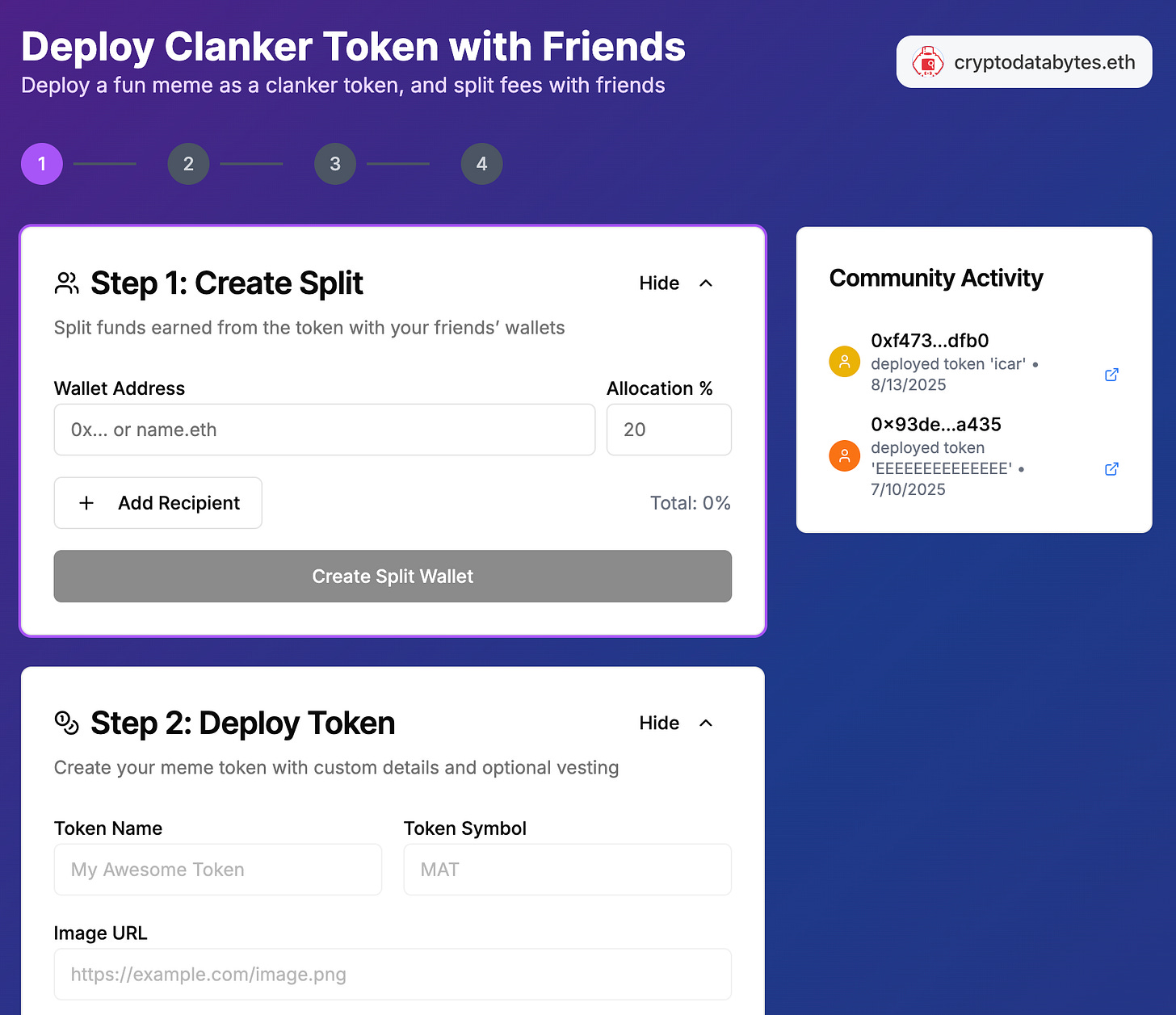
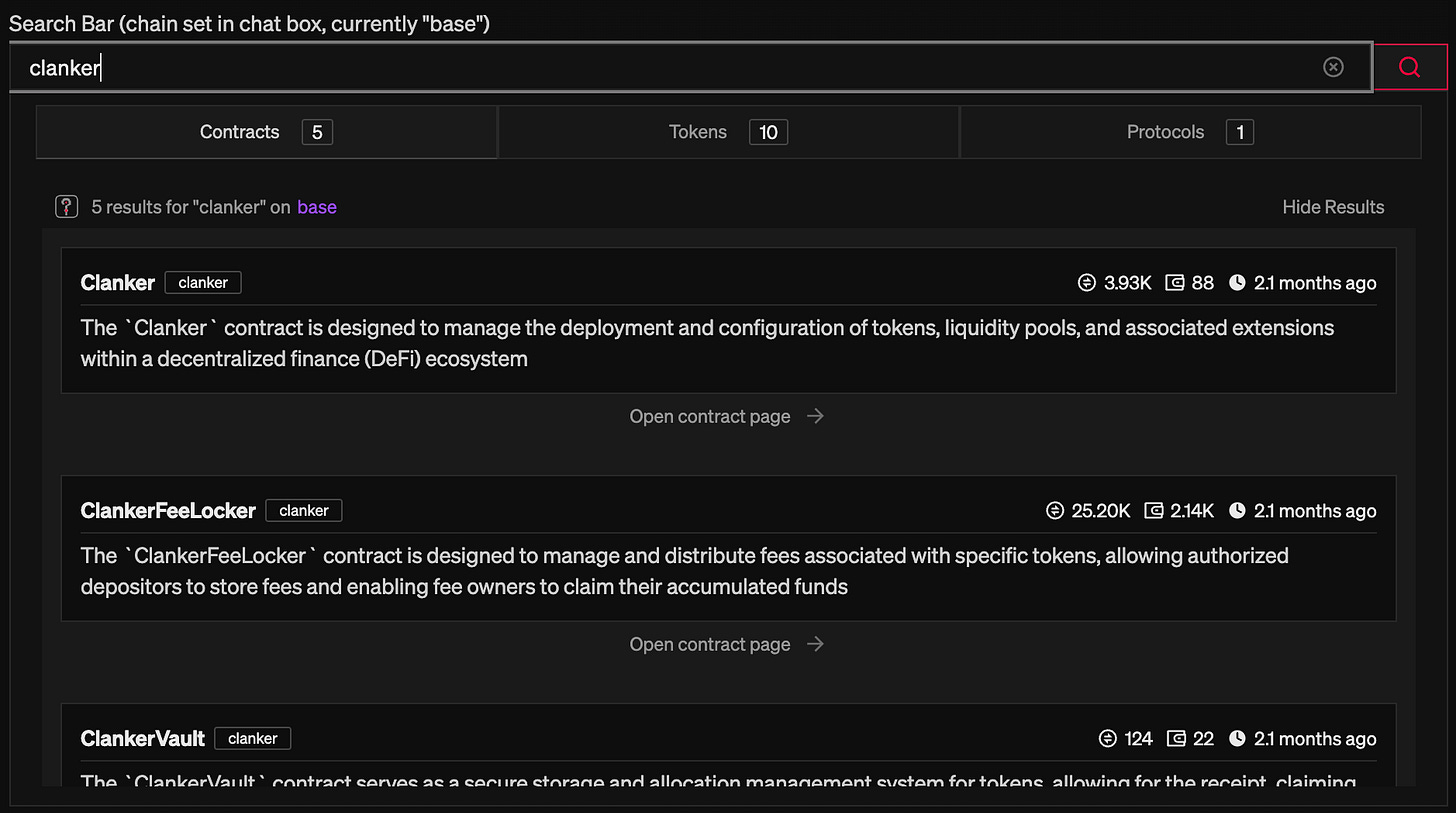
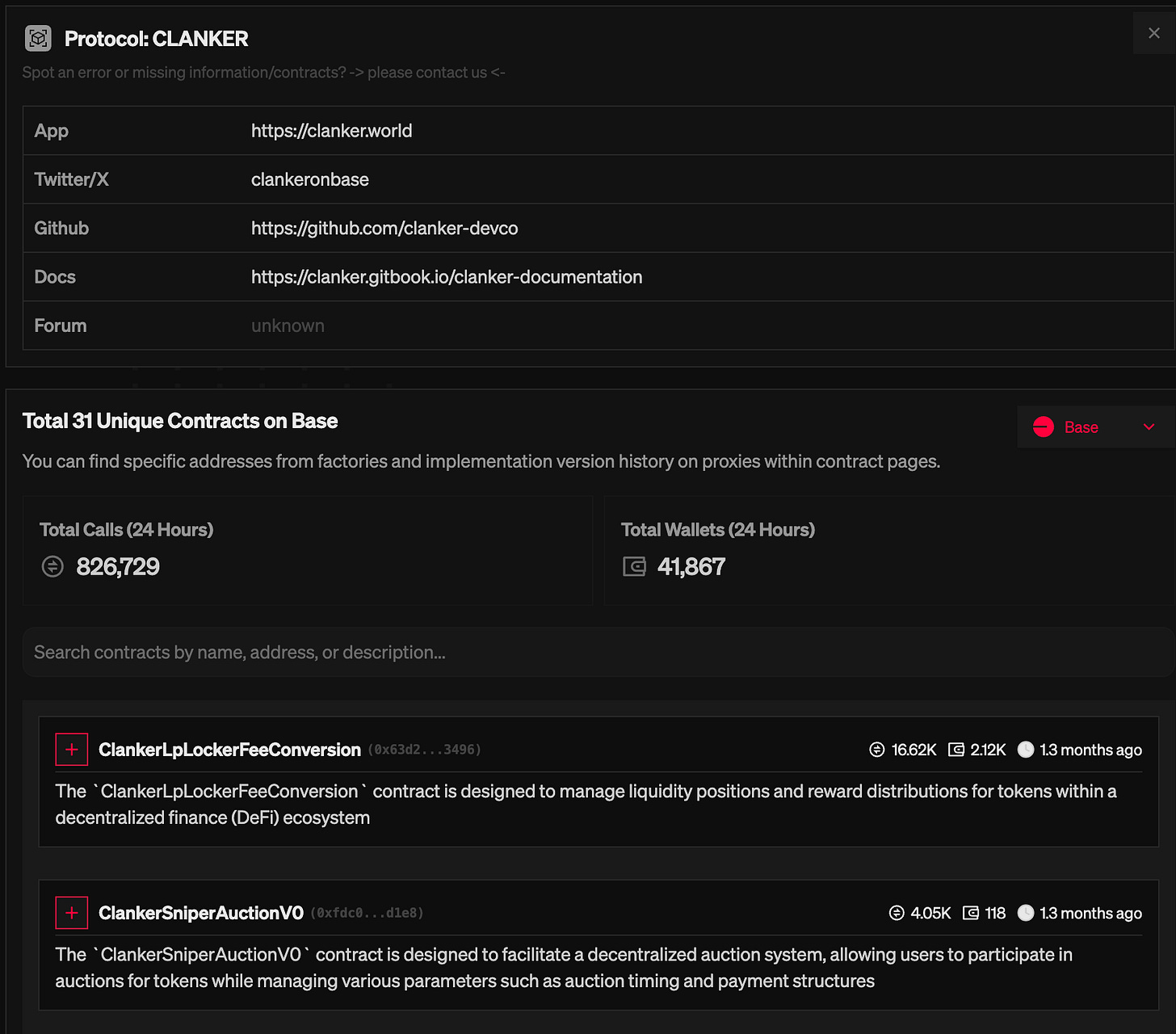
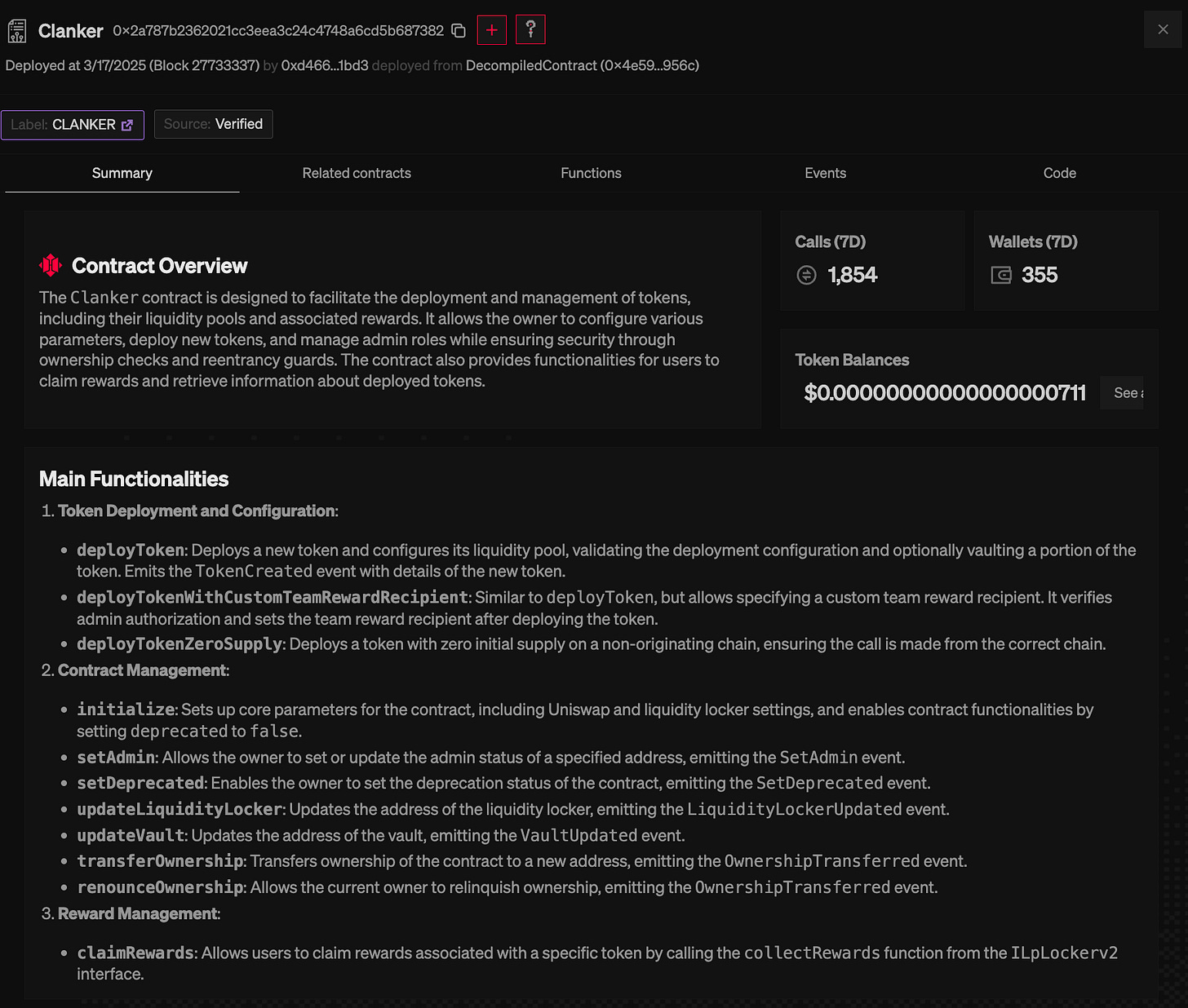
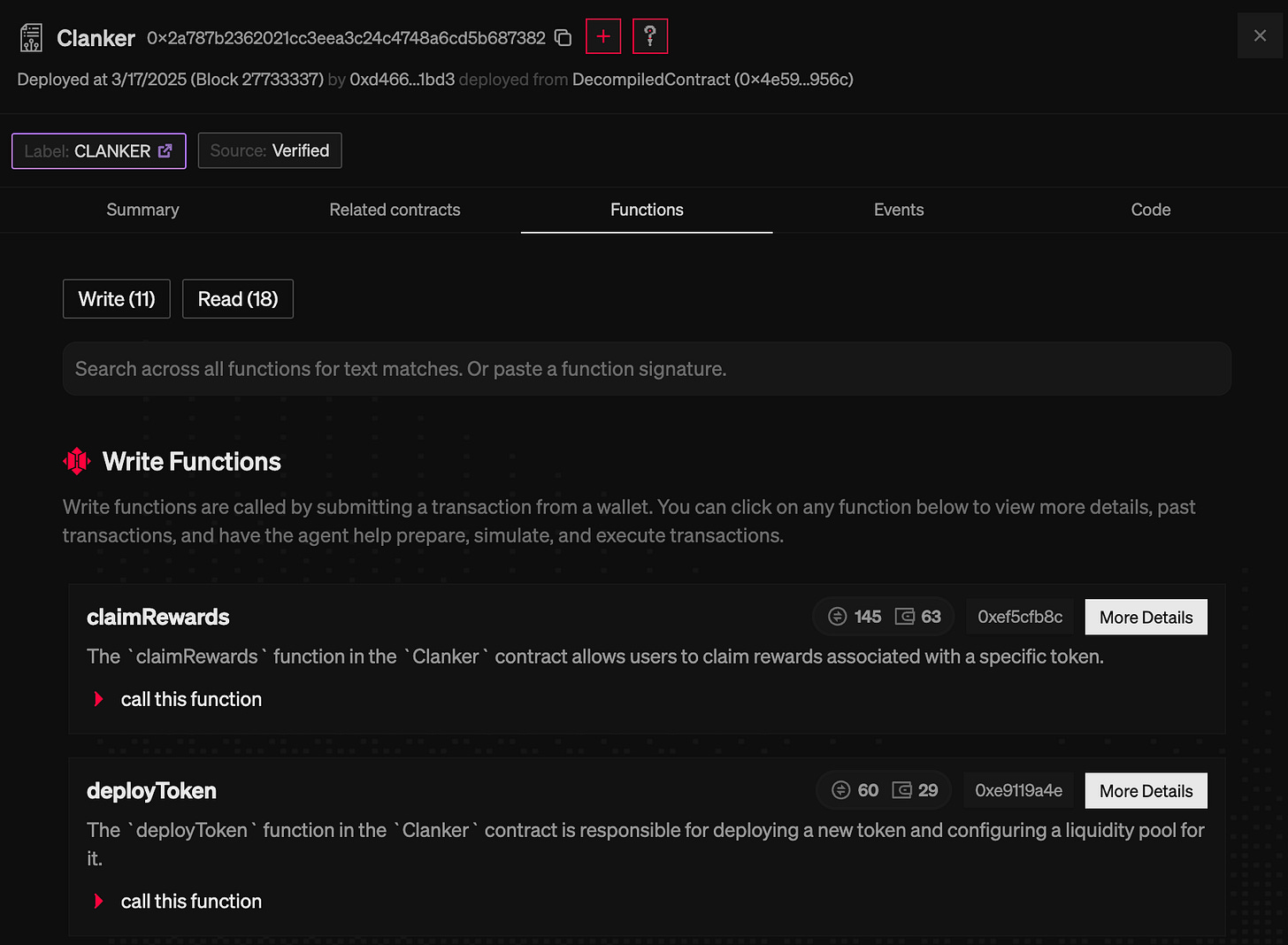
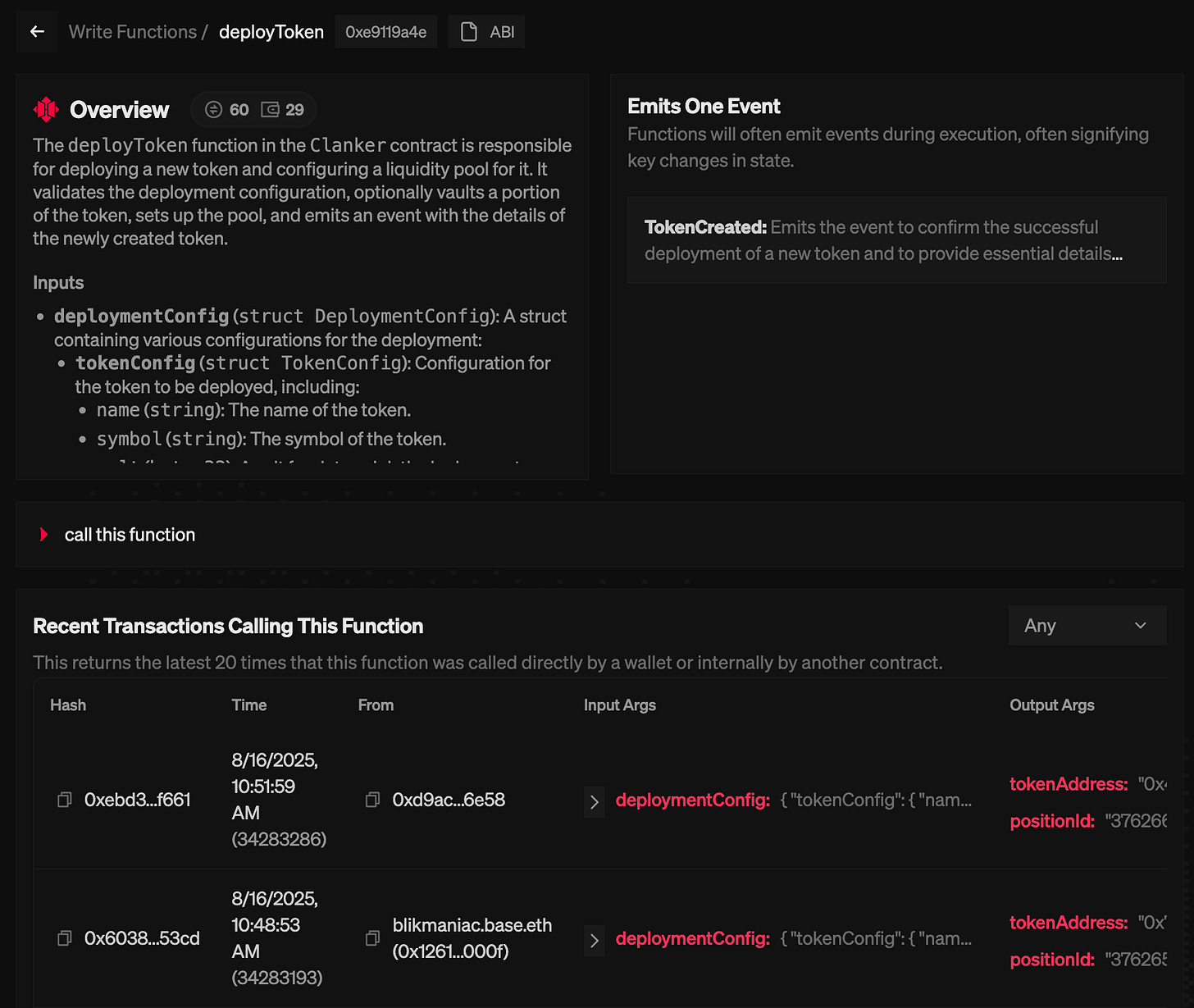
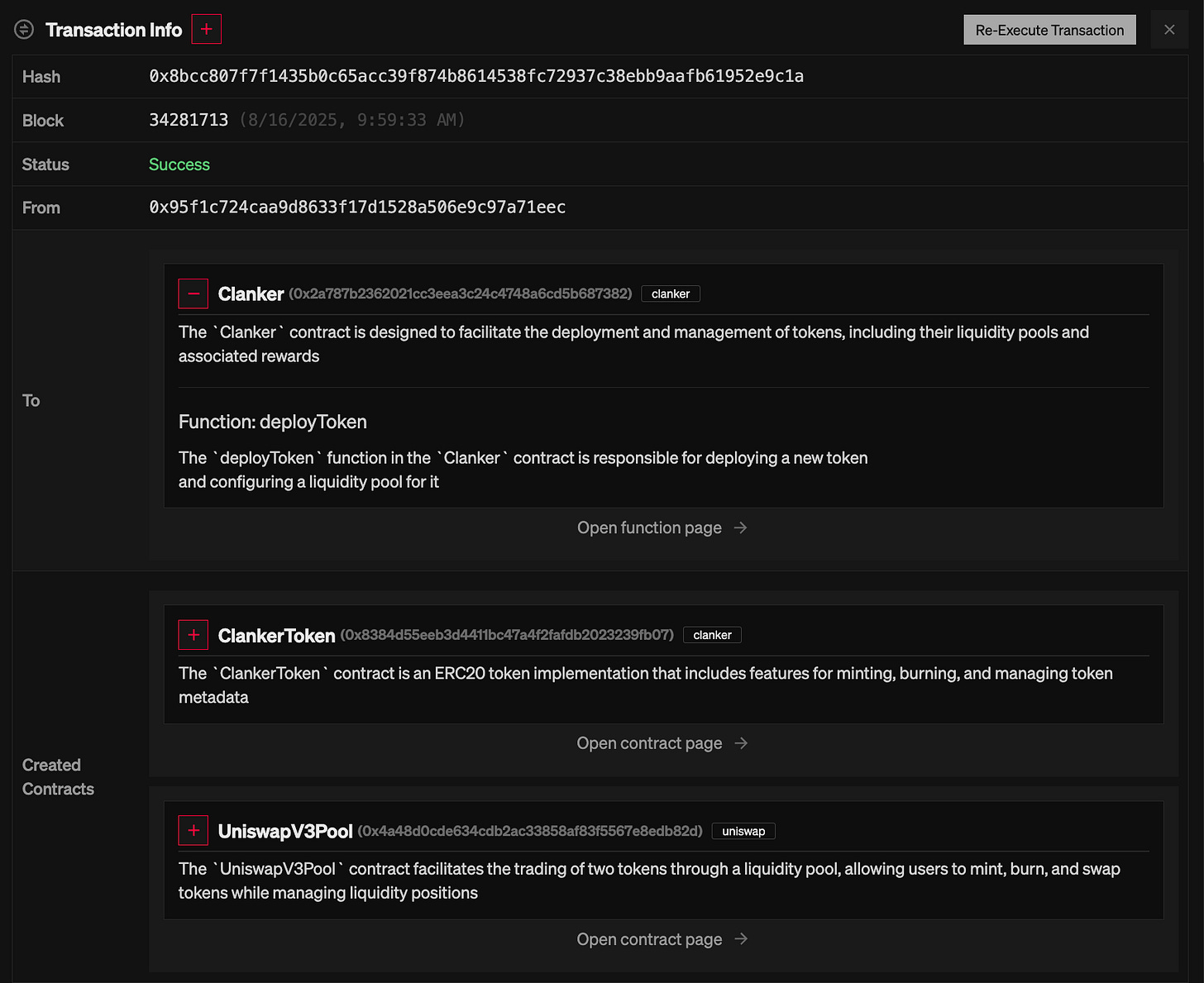
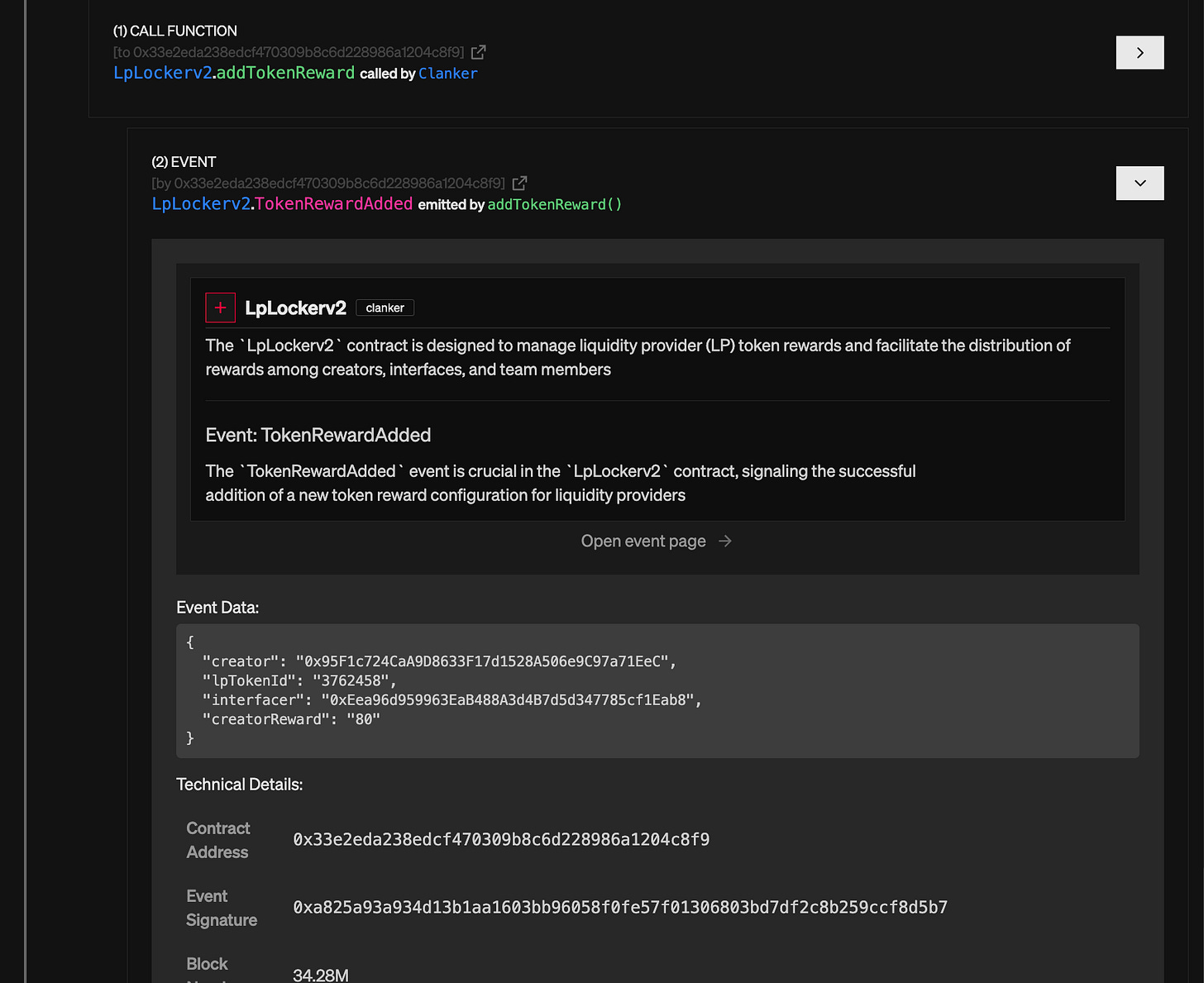
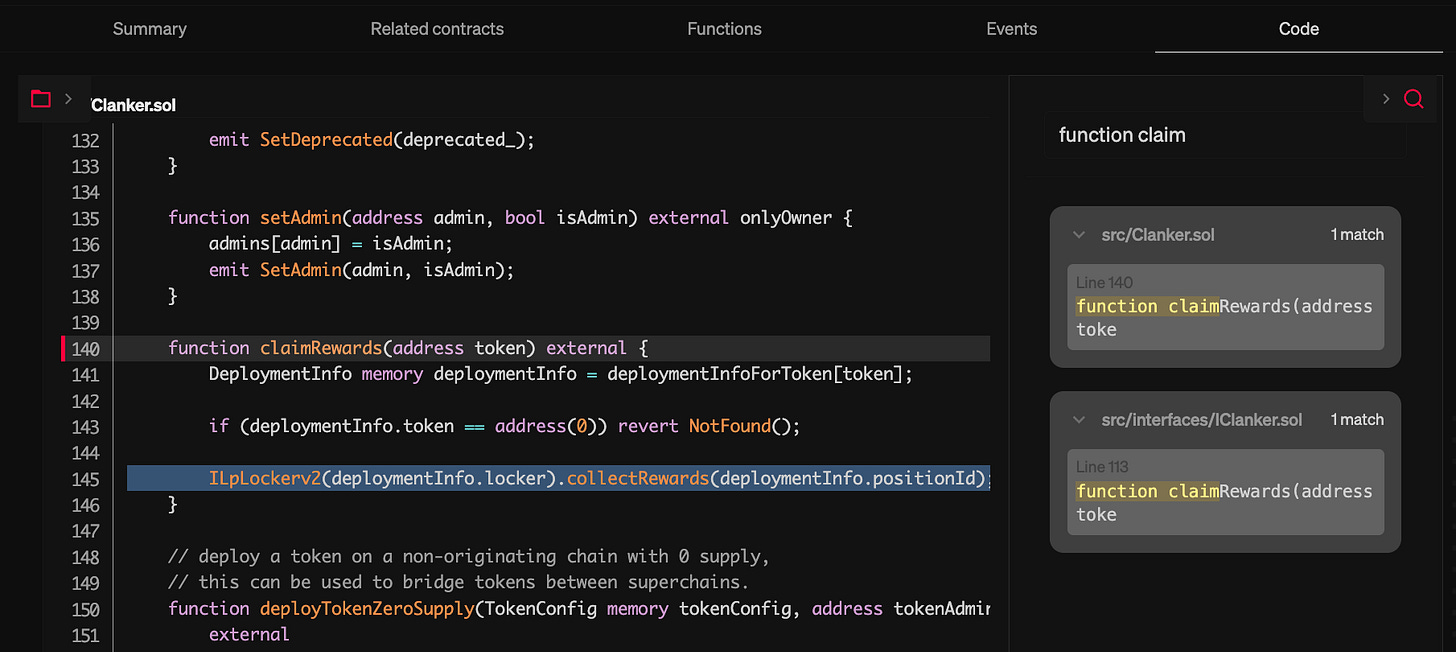
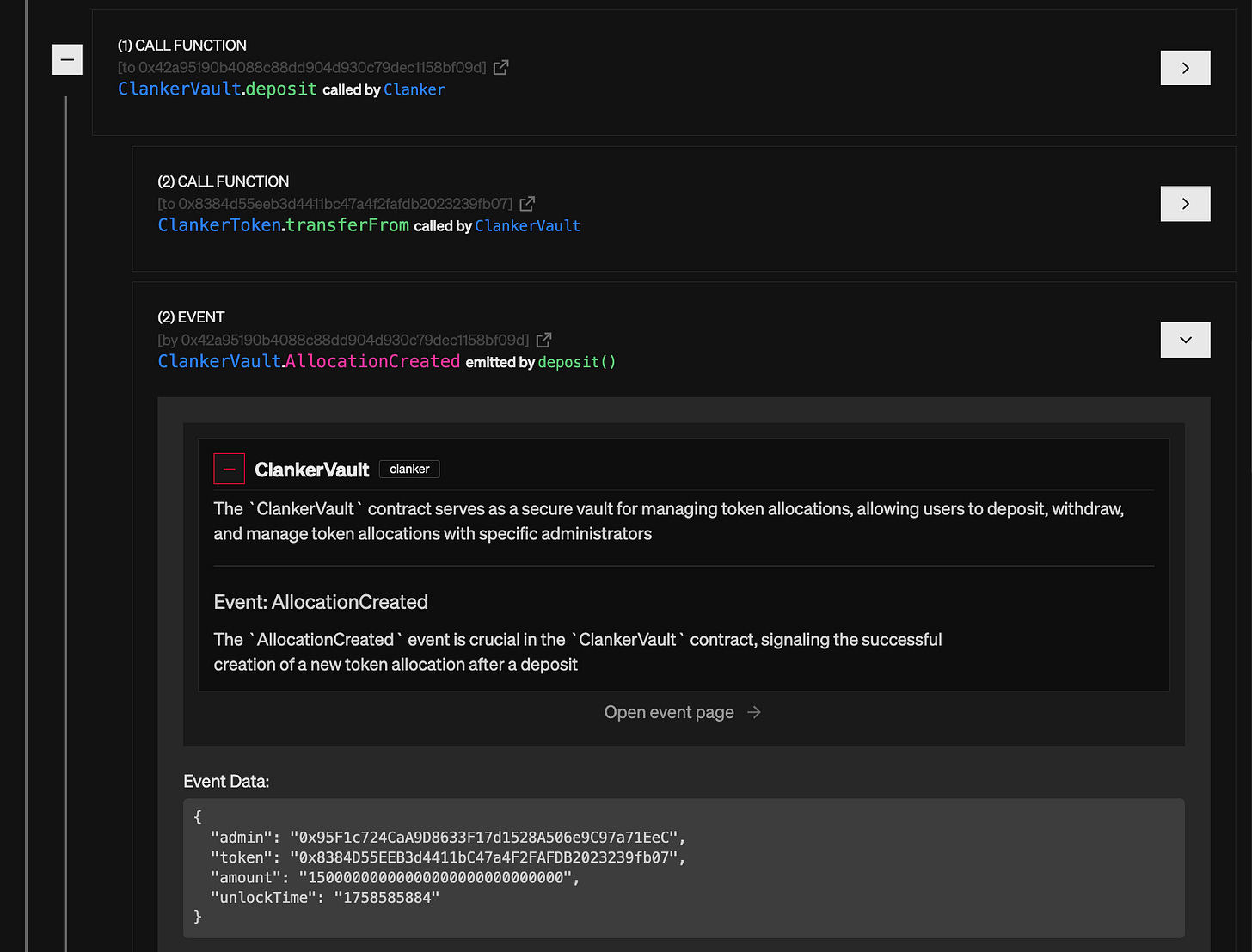
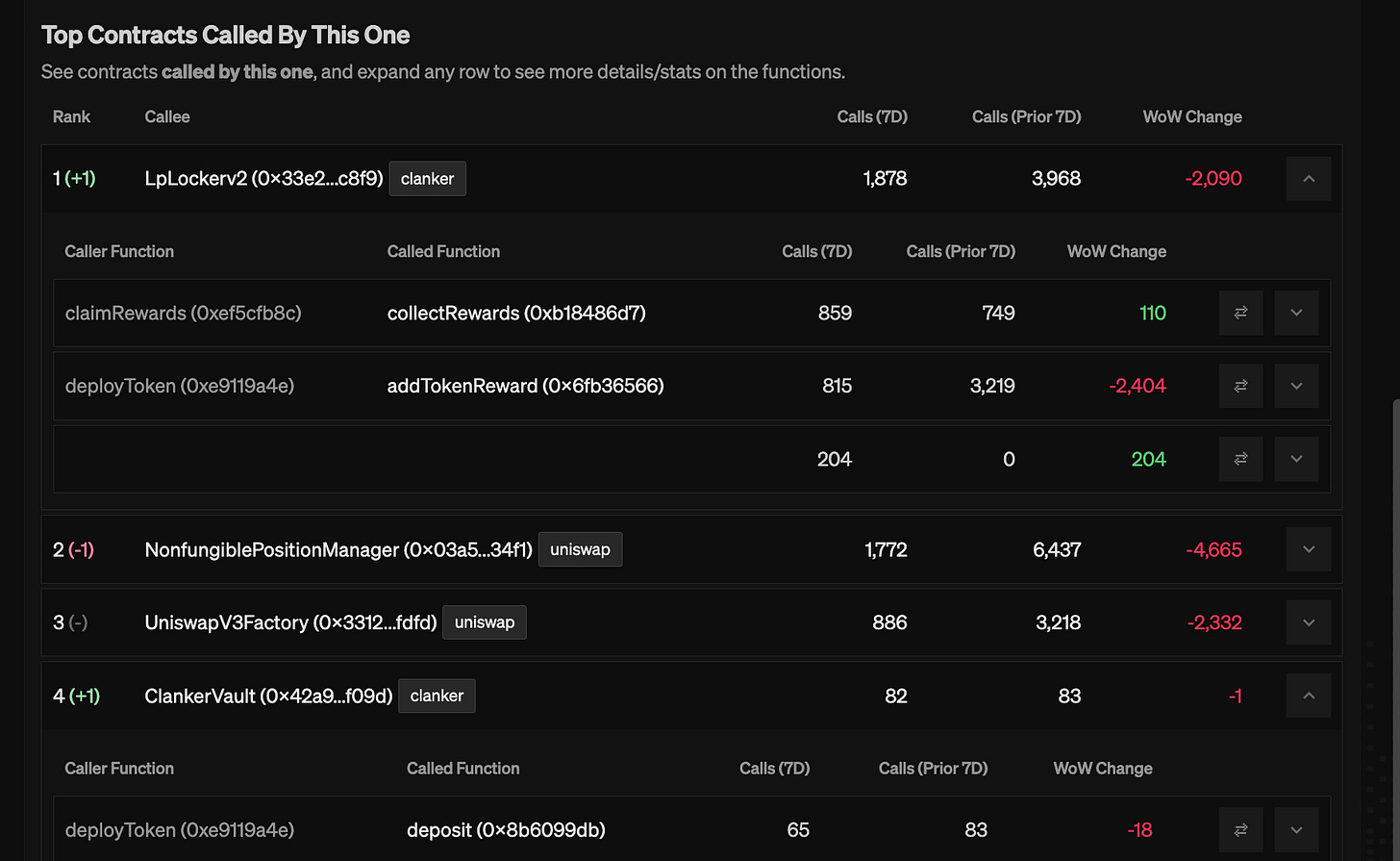
Vibe coding always ends bad